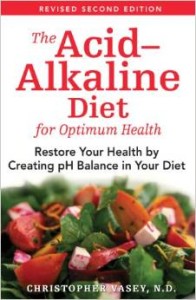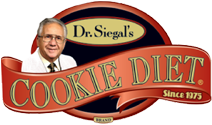Diet Review and Overview: Biggest Loser Diet
The Skinny Average Weight Loss: Usually 1-3 pounds per week. Type of Diet: Balanced Diet, Calorie Restriction with calories consisting of 25% fat (of which saturated fat is limited to Continue Reading

Treatment • Lifestyle Tips • Diabetes Prevention

The Skinny Average Weight Loss: Usually 1-3 pounds per week. Type of Diet: Balanced Diet, Calorie Restriction with calories consisting of 25% fat (of which saturated fat is limited to Continue Reading


Eating lean meat in small amounts can be part of a healthy plan to lose weight. Chicken, fish, pork, and red meat contain some cholesterol and saturated fat, but they also contain healthy nutrients like iron, protein, and zinc.


This diet (popular among celebrities) claims to help your body maintain your blood ph level to ward off disease. Research strongly suggests that food has little impact on blood ph as your body is constantly adjusting levels on its own without our help. However, whether or not this diet does what it claims (helps you lose weight, avoid cancer and arthritis among other claims) the food choices allowed on this diet are quite healthy.


Dr. Andrew Weil created this diet with the idea that by following a special diet you can help counteract chronic inflammation that is the root cause of many serious diseases. He claims his diet may have a positive impact on preventing or improving symptoms of: Heart disease, Alzheimer’s and Parkinson’s diseases, Age-related disorders, including many cancers, and autoimmune diseases such as rheumatoid arthritis and lupus.


This diet plan focuses on teaching you how to make healthy food decisions about the way you eat and how to incorporate more fruits and vegetables while losing weight. The plan involves reducing calories by using shakes (and other HMR products) as a meal replacement. The plan is most effective when you participate in the supervised program.


This is a fad diet tried by many, and even adored by some. Celebrities have been using this diet to crash off weight for almost a 50 years, which may be one of the reasons this diet makes a comeback from time to time.


This diet can seem a little overwhelming at first, but it will teach you a lot about food and get you thinking about what you are eating. It is important to note that this diet is specifically designed to try and attack belly fat and give you a nice 6-pack abdomen so you must do the exercise part of the plan as well.


This diet takes dieters through four cycles in 17-day increments. Proponents of this diet say that changing your plan every seventeen days helps avoid plateaus and boredom and makes it mentally easier for people to stay on the plan longer.


This diet started to appear in the 80s. The basic goal is to promote fast weight loss, as well as giving you more energy and a body cleanse. Once the three days have passed the dieter is allowed to resume normal eating for another three or four days before returning to the diet for three days.


The Engine 2 Diet was created by firefighter Rip Esselstyn when he noticed that his firefighter co-workers had high cholesterol. The diet is a 28 day meal plan that lets you enjoy a variety of foods such as vegetables, fruits, seeds, nuts, and grains. Although this is a plant based diet, however, it doesn’t completely forbid meat.


As with most low-carb diets, exercise is optional. Initial weight loss can be significant, but largely consists of water weight loss and from depleting your body’s store of glycogen. If you love meat, and can live without certain fruits, grains, and pasta for a while, this is an alternative to Atkins that you can try.


Who would not want to eat cookies and lose weight? Unfortunately, eating cookies — even “healthy” cookies adds calories and carbohydrates that may make it hard for some people to lose weight. The solution? Severely restrict overall calories.


The 5:2 diet is a plan the involves intermittent fasting (IF). If you have any issues with blood sugar, or a lifestyle or occupation that requires daily energy from food, this is probably not the best plan for you. If you are pregnant or nursing, this is not a good plan to consider.*


The Flat Belly Diet has two parts, a four-day start and the four-week eating plan. This is a reduced calorie diet with high amounts of monounsaturated fat (MUFA) that purports to slim down stomach area with little to no exercising.


Flexitarian is a combination of two words: Flexible and vegetarian. This diet allows you to be a vegetarian most of the time, but lets you have some animal protein if the urge strikes. Hardcore vegans and vegetarians may take offense to this term, arguing that you are either you are a vegetarian or not, which, in general sounds logical, but does an occasional burger mean you can no longer claim a vegetarian lifestyle?


The Atkins plan lets you eat almost unlimited animal protein including red meats, eggs, and fish. Atkins forbids pasta, breads, fruit, some vegetables, or dairy other than butter, cheeses, and cream.
There is also a vegetarian version of this diet called Eco-Atkins.

The following links offer overviews of more than 55 popular diets including commercial diet programs, fad diets, liquid diets, vegan and vegetarian plans, meal replacement plans, low-carb, gluten-free, low-glycemic, low-fat, Continue Reading


Regular physical activity can help keep your thinking, learning, and judgment skills sharp as you age. It can also reduce your risk of depression and may help you sleep better. Research has shown that doing aerobic or a mix of aerobic and muscle-strengthening activities 3 to 5 times a week for 30 to 60 minutes can give you these mental health benefits. Some scientific evidence has also shown that even lower levels of physical activity can be beneficial. That’s great, but does sex count as exercise? (Hint: yes!)


Start by asking what your body needs. Answering that question is not as simple as it sounds because your body often only tells you what it needs by showing signs of stress, illness, or nutritional deficits that may show in the teeth, fingernails, hair, eyes, skin, and other organs.


Not everyone who has pre-diabetes needs to lose weight so weight-loss isn’t the only focus of pre-diabetes treatment. Pre-diabetes is a medical condition that needs to be treated by making changes in your lifestyle, and, for some, may even require medication to help improve insulin response or lower to lower blood sugar. So what are these ‘lifestyle’ changes? That depends on the individual and may include a variety of things you will need to address that you may not even be aware of.


People with pre-diabetes who lose roughly 10 percent of their body weight within six months of diagnosis dramatically reduce their risk of developing type 2 diabetes over the next three years, according to results of research led by Johns Hopkins scientists.
